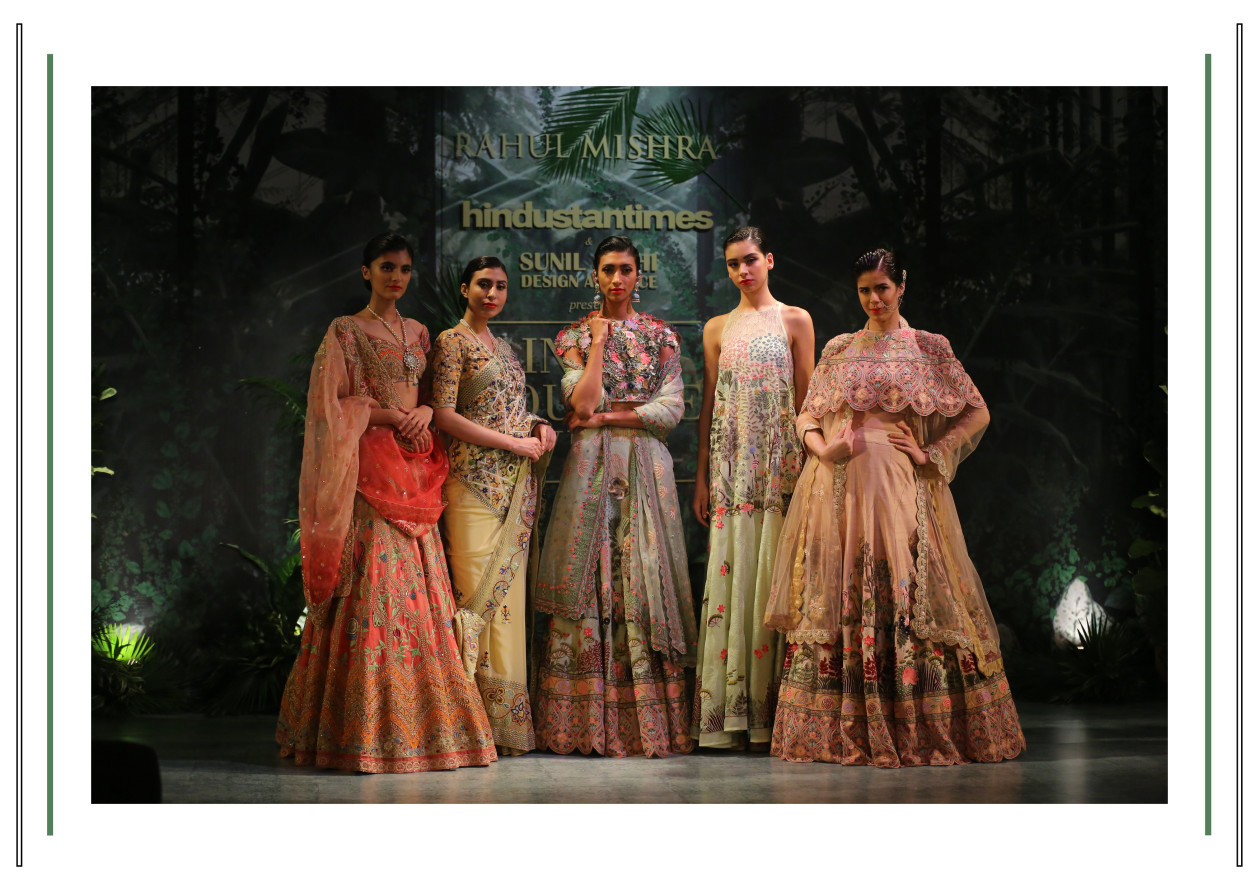There is a bit of Swarovski to Banarasi and a whole lotta humility in the voile, plus a new menswear line, this dichotomy is called Rahul Mishra.
By Asmita Aggarwal
There are many engaging things that Rahul Mishra reveals that you may not have thought of— specimen No 1. No designer must be a slave to his signature. Just because a look becomes popular doesnt mean you, need to do it over and over again. The key is to move on from your accomplishments.
In his decade-long journey, Rahul has gone slow, but steady with a store in Delhi last year and one in Mumbai set to open in another month. He has learnt the most crucial lessons about retail, finances and designing as well as challenging the status quo. I grasped what the country wants and what people appreciate as well as what I desire to do. Which were at loggerheads and it was a task to resolve these dichotomies, he admits.
The underlying motive of his brand is to generate employment, craft an alternate road for brides to the altar, and dissociate your public from private life, which he is still working on.
Rahul, understood very early on that the new bride is not a rich woman, who wants to lounge on her chaise, but one who has self-generated wealth and wants to make independent choices; not those dictated by her mother-in-law or businessman father. She can be a doctor, engineer, musician, painter, graphic artist, but someone, who has her own identity and doesnt want to look like a Bollywood celebrity. If you aspire to look like a chandelier you can always go to Chandni Chowk, he laughs.
This self-assured bride is the one who challenges Rahul and makes him come up with concepts that are far removed from the 40 kg lehengas of yore that made it tough for her to dance at her own wedding! Last year we had brides who wanted white, with just a touch of orange, this is the new dimension of couture. These women are achievers in their own right with a lot of personality that money cant define, he says.
This is another reason why the once abandoned organza that women would complain fluffs up is now de rigueur in a brides wardrobe. As shape is not important anymore, character is, and most women who are obsessed with chiffon are now open to material exploration. Wearing chiffon Rahul equates with eating dal chawal everyday, but you need to try pasta and that is organza! Living is also about testing new waters and breaking stereotypes, he says. So resham is his new companion along with organza almost 50 per cent of the line is executed in the latter.
Mishra is an advocate of not using net that is anyway so readily available; his trek to the summit is about using things that the critiques never expected him to like Swarovski, which are strategically placed this year. Can anybody shy away from bling?
And it is probably this ingenious thinking that has made Rahuls line alternate much like the Japanese philosophy that he swears by. That tells you, you will be at peace only when the four aspects of life align meticulously —- passion, profession, vocation and mission. What you love doing and what you are good at is your passion; profession is what you get paid for and mission is what the world needs. When all four elements come together you have achieved balance. Designers somehow cant be like Monet, where you paint the same cathedral in four different ways and it is acceptable, the former doesnt enjoy that kind of liberty. You need to look at exciting things that thrill you, he adds.
Maybe thats why he is launching his first ever menswear line, after all he has been in the fashion world for ten years now and this is his step forward to foray a new territory. However, the beauty of Mishra is that he approaches it with child-like curiosity and not the arrogance of a veteran. And this humility seeps in his choice of fabrics as well— cotton voile, which is used to make simple kurtas, letting the craft lead him rather than the other way round.

Rahuls ideology centres around breaking set notions and this reflects in his preference for the Lucknowi technique of quilting where you join two layers of fabric with hand hemming, over the oft-used zardosi. This layering has been used to create a tone-on-tone effect though his experiments with shape and structure continue. So there are all kinds of panelling from straight to reverse as well as gusset enlargement that makes a hybrid kind of a kurta, which offers the comfort of a shirt.
There are touches of Banerasi fabric too, but that has been used with a sense of restraint, much like the sherwani that is treated like a Western jacket with no highlights of collars but supremely executed graphic artwork. The key is balance that comes with contouring and even in the way we have placed embroideries, says Rahul. In a way the embroideries nowhere hinder the fall of the ensemble rather elevates it, and every millimetre is hand done. There are smattering of French knots, Parsi gara to Kashmiri embroidery in his entire line.

As you watch Rahul tell Aarna his daughter not to throw the balls, she defies him and throws all five on the floor. The Woolmark prize winner is a bit like that when you look at his trajectory from adding the bomber to a lehenga two years ago to now using little shiny crystals—– announcing that if you put him in a box, he will swiftly climb out of it and do just the opposite!

